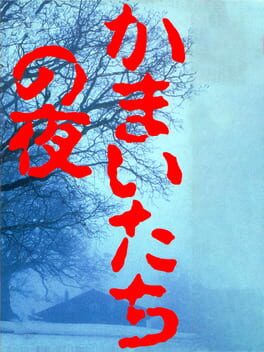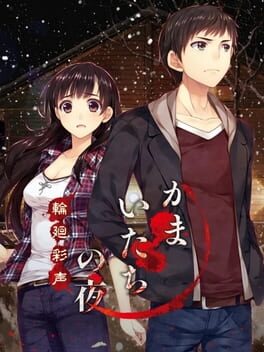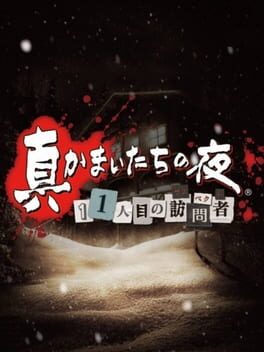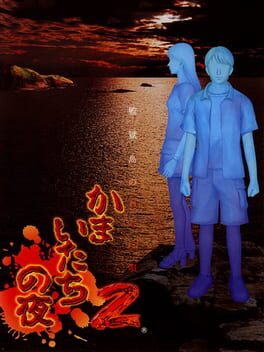

Kamaitachi no Yoru is a sound novel developed and published by Chunsoft. The game was first released on November 25, 1994 for the Super Famicom. It was also ported to the Playstation and Gameboy Advance It became available on the Virtual Console in February, 2007 for 800 Wii Points. The story-line was written by Takemaru Abiko and production was directed by Kazuya Asano and Koichi Nakamura. Kamaitachi no Yoru was the second sound novel developed by Chunsoft, and its popularity brought a myriad of other companies to develop similar games. The term "sound novel" was originally a registered trademark of Chunsoft, but is now regarded as a whole genre of its own. The game revolves around Toru and his girlfriend Mari, who are suddenly drawn into a horrible murder mystery while on vacation at a skiing lodge. The first part of the games develops as a crime-solving adventure.
Also in series
Reviews View More
I'd love more games that do such significant tone shifts. I know that some route based games that turn up certain sliders but still ultimately fit in the same genre like Fate Stay Night. But I'd love to play more games that just totally diverge into wildly different ideas.
Sound
What is at the bottom of Kamaitachi no Yoru? Strip it all back, find its heart, and what exactly is this game? That is the real mystery. And it's a mystery you could spend a lifetime trying to solve.
More thoughts here
I quickly realized that this would be a great choice for me as an intermediate Japanese learner: because the scenario is relatively grounded, it's written in natural, unstylized language, unlike what you'd find in a JRPG or even other genre-inflected VNs. At the same time, though, it's not the stilted, repetitive prose I often see in guided readers or other texts for people at my level. There's a vested interest in making these characters sound like characters and in developing an organic internal monologue for Toru. Between that and the context clues granted by the sound and visuals, I was able to work outward from the main idea in numerous sentences to translate unfamiliar phrases or constructions based on my understanding of the storytelling. Finally, there's nothing too complex or esoteric going on with the story or most of the characters - just good, meat-and-potatoes crime thriller writing - and it's not a long VN. It would probably take a native reader about five hours to get all the canon endings.
My method at the beginning was to read a few sentences, watch this Japanese playthrough to help me look up unfamiliar kanji without radical-hunting on Jisho, then check my work with this English translation. Both of these playthroughs make a beeline to the true ending almost immediately, however, and if you know anything about visual novels, you know that much of the fun and intrigue comes from stumbling through some of the bad endings first. So I forewent my crutches and braved all eight of the "failures" alone.
Although I struggled at first, and both my self-doubt and my time spent digging through Jisho increased significantly, this was the right choice. In VN tradition, I barreled headlong into the grimmest of the grim endings and was struck by the game's eerie hopelessness. Toru, your typical goofy hornt-up VN teen hero, flails around desperately trying to make sense of the situation, growing more paranoid, angry, and violent with each error he steps into. A scene in particular that landed for me was when one character is murdered and another, who seemingly had little interest in or connection to them, is overcome with anger and sadness, and Toru has a disorienting psychic episode where he realizes that he doesn't actually know anything about any of these people.¹ It's an intriguing moment for both characters made moreso by the VN's visual and musical accompaniments. Although the character silhouettes and the muted photographic backgrounds are beautiful, the music is really where this game shines. You lose out on A LOT of this if you go straight to the good endings; you don't even learn the murderer's motives. And though I had accepted early on that I would never be able to figure out who the killer was on my own, there's simply no way to do it without finding clues in the bad endings first unless you guess luckily or cheat.
After my first ending, I had a difficult time finding the others. I wasn't always confident about what I had previously read and needed to do differently, and the UI doesn't make it much easier, so I switched from the SNES version to the PSX. They are fundamentally similar (the PSX music isn't as good, too fussed-with maybe?), but the PSX has a flowchart. Blessed be! Seeing it all laid out as I worked through the rest, each little module linked together, really drove home how unlike Kamaitachi no Yoru was from anything else on the SNES in terms of atmosphere, subject matter, and narrative structure. Its influence is undeniable; the game was a big commercial hit, and both Ryukishi07 and Kotaro Uchikoshi² have acknowledged its impact on their work. It's been a white whale for me for a long time - I first read about it maybe twenty years ago - and the experience still surpassed my expectations. To enjoy something so dark and rich and see how plainly it influenced other works that are important to me was a true privilege and made me so excited about this medium's bountiful history!
TL;DR get you a girl who can perfectly execute a one-armed shoulder throw in a time of crisis.
¹Granted, this is my interpretation, based on my shaky Japanese. If it's wrong, feel free to embarrass me in the comments. <3
²One part of this presentation a few minutes earlier, where Uchikoshi talks about how Kamaitachi no Yoru "plants its flags in the player's memory," is especially interesting given the roles Sigma and Phi serve in Virtue's Last Reward, but he keeps the connection a bit broad, presumably to avoid spoilers. Also, listen to this bop and try to tell me that Shinji Hosoe isn't a fan too.
credited as one of the most influential mystery/horror vns out there, in particular directly inspiring uchikoshi and serving as the basis on which virtue’s last reward was built on, i was quite excited to jump into kamaitachi no yoru finally now that my jp is at a point where i can read stuff comfortably, and it definitely was worth the wait.
the story is essentially your typical and then there were none type setup. however instead of an island and the cast being trapped by a typhoon, instead the location is a ski lodge, with the characters being stuck in a snowstorm. its a small change but as someone whos seen this setup several times by now it was a nice breath of fresh air seeing the ways in which this change in location has an impact on the mysteries at play.
one aspect that i had heard a lot about going in was kamaitachi no yoru’s at the time unique approach to choice making. while you still have your typical cyoa choose a,b,c type choices, the main focus here is in identifying who the culprit is. quite early on in the story (before any of the main cast dies), you are given an option to point out who you think the culprit is by entering their name. there are no flags here meaning its entirely possible you could just get it right first try and get the best ending, however this is very unlikely. in the case that you don’t know who it is, the story will continue and people will start to die. a bit later on you are given a 2nd opportunity to solve the case in the same fashion. solving the mystery here will still net you a good ending, however slightly worse than if you had solved it prior. failing to solve the mystery here leads the murders to continue, where the only endings you can get are bad ones. looking back now its quite a basic structure but for me it was intriguing enough to draw me in and see how early i could solve the case. and whats especially great is there is no big xd cliche asspull plot twist - the culprit and their motives make a lot of sense, can be deduced from clues the game leaves, and feels rewarding to figure out.
kamaitachi no yoru originally released for the snes back in 1994. because of this, i was expecting the presentation to be slightly dated by todays standards but instead was blown away. the games artstyle uses a combination of photography and amazing pixel art to really craft this immersive world. instead of using anime style portraits, the game opts for sillouettes of the characters instead which adds a lot of charm culminating in a unique aesthetic that i really enjoy. some of these are animated at times as well and they look almost disney level quality at times. adding to this immersion is the ost which might be one of if not the most impressive scores i have ever heard on the snes. this was released under the brand of “sound novel” and its not hard to see why. without even touching on the phenomonal music, the use of sound effects from footsteps to these ominous pads that make you feel dread whenever they appear to the sound of the raging blizzard outside. its honestly mindblowing how a game from 20yrs ago can not only live up to but in many aspects outshine vns that are getting released today.
unfortunately, to experience the game in english your options are very limited with both being shit. the remake (kamaitachi no yoru rinne saisei) has gotten a fan translation however the amazing silhoutte style of the original that set it apart from all these fucking anime characters type portraits has gotten overhauled and replaced with just that which pretty much rips away and shits on one of the best aspects of the game. its so bad of a change in fact that the majority of jp fans dislike it too, mass disliking bombing the reveal trailer back when it came out.
on the other hand, there is an official localisation that was done in 2014 and though i havent played it i can tell you right now that you should stay the fuck away from it. first of all its ios only which should already be a red flag, but all the character names and where the story is set have been “westernised”. the main character names of toru and mari have been changed to max and grace and instead of taking place in a snowy region in japan it now takes place in fucking canada. also some of the lines i've seen just read really badly to the point where it breaks your immersion
it really sucks that these are the only options available. although i dont think my jp is good enough to do it justice rn, i really want to take a shot at making a full english script or even a fan translation for the original game at some point in the future so more people can experience this.




